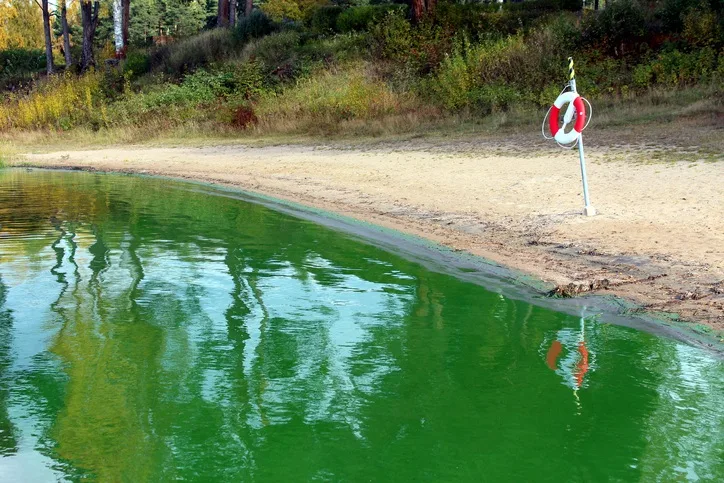
Blue-green algae can have major effects on Canadian lakes
If you’re a Canadian cottager, your lake, or one nearby, has likely experienced a blue-green algae bloom in the past decade.
Until recently, however, any health concern was limited to those who might have had direct contact with the algae, either by drinking the water or swimming in it. But new research out of Florida Gulf Coast University (FGCU) reveals that particles can become airborne and travel, getting into the lungs of those as far away as two kilometres from the algae itself.
RELATED: Blue-green algae made a stink in Toronto last summer
Blue-green algae is cyanobacteria, which contains the toxins microcystin and BAMA, both of which are dangerous to humans and animals. What isn’t yet known is at what levels they cause negative health issues and over what length of exposure.
SEE BELOW: THE EFFECTS OF BLUE-GREEN ALGAE
Michael Parsons, a professor of marine science at FGCU and one of the researchers, isn’t sounding the alarm yet, though he says more research is crucial to find out whether these detectable levels of toxins can negatively impact health. “There are World Health Organization guidelines that say don’t get in the water if the microcystin concentrations are above a certain level,” says Parsons. “But for the air, there are no strict guidelines around when you should be avoiding the air or not breathing without a filtration device and so forth.” What’s more, he says, “we have no idea how long these toxins stay in our system.”
The bacteria can be found in almost every Canadian lake, David Schindler, a professor of ecology at the University of Alberta, told CBC News last summer, after the deaths of three dogs in New Brunswick were blamed on the bacteria. Most of us don’t notice the presence of the bacteria until we can see it in the form of a bloom and, often, smell it.
Spring is here! Check our official report to see what the season has ahead, plus get an EXCLUSIVE sneak peek at Summer 2019!
John Cassani’s primary concern is chronic exposure. Cassani is the Calusa Waterkeeper in southwest Florida for the Waterkeeper Alliance, a global organization dedicated to preserving water quality. He says that a lot of people are nervous about these new findings. “We’d all like to know more about what it means,” he says, noting that these blue-green algae blooms are happening more frequently and covering a broader area.
Until we get more answers, Parsons encourages cottagers to stay out of the water (and keep pets out) when there’s a bloom. And, he says, “listen to your body. If it smells bad, and you’re not feeling well, avoid the area.”
This article was written for Cottage Life by Leslie Garrett









